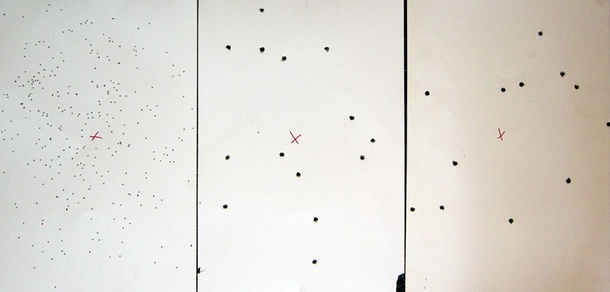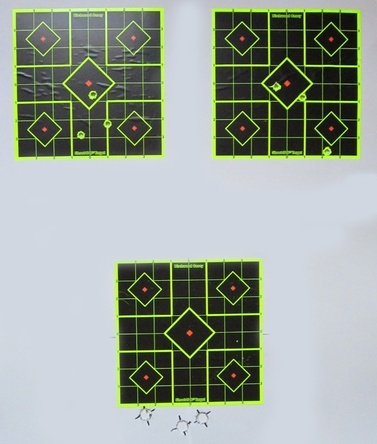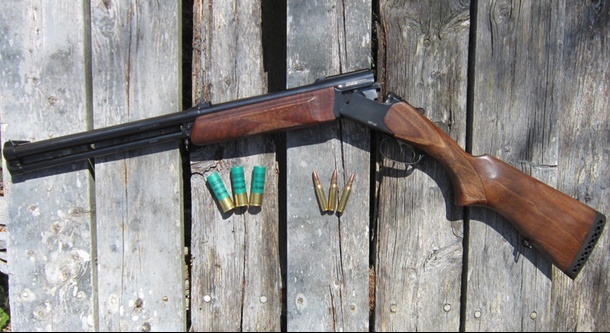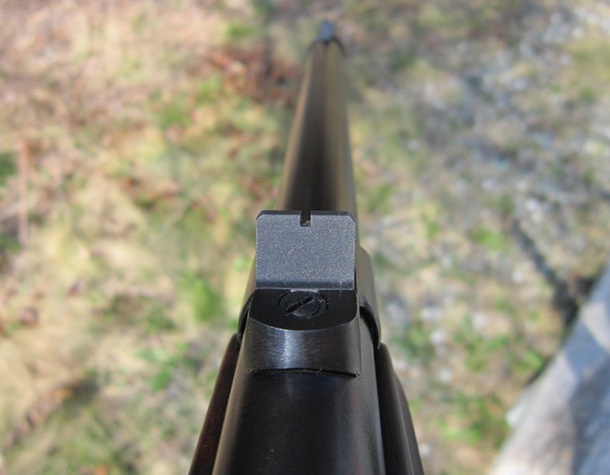I have a confession to make. Even though I have been hunting deer for twenty years, I am really, really bad at it. Part of the reason for this is a personality flaw. To me, waking up at dark-thirty a.m. to go sit still in the cold woods for endless hours hoping a deer happens to wander within striking distance is more akin to a circle of hell than a fun day out. I typically don’t enjoy doing what is required in order to shoot a deer. I’d love to be able to shoot a deer, but my tolerance for tedium is generally too low to make it happen.
The second reason for my lack of whitetail slaying success is due to my location. I grew up hunting in the woods of northeastern Vermont, where due to typically long and snowy winters, deer populations are generally low. A Northern New England hunter simply isn’t going to see as many deer in a season as his mid-Atlantic or southern state counterparts.
What are often abundant in the woods of Vermont, New Hampshire, and Maine are small game animals such as ruffed grouse (called partridge in New England) and snowshoe hare. What cold, tired, and possibly bored deer hunter wouldn’t love to take home a few birds or bunnies as a consolation prize at the end of a long day of not seeing deer?
The problem with taking small game targets of opportunity while deer hunting is the fact that most deer-capable centerfire cartridges have the potential to turn a small forest critter inside out, leaving no edible meat. While some hunters will keep a rimfire pistol on hand to take small game during a deer hunt, I know that I’m not a good enough handgun shot to make that method work. For me, the solution to game-getting versatility came in the form of the Baikal MP 94 combination rifle/shotgun.
Overview
Manufactured in Russia by Baikal Arms and imported by U.S. Sporting Goods, the MP 94 incorporates both a 12 gauge shotgun barrel and a centerfire rifle barrel in an over/under, double trigger, configuration. The model I ordered consists of a 23.5 inch 12 gauge barrel over a .308 Winchester barrel. The shotgun barrel is threaded to accept choke tubes and the gun comes with cylinder, improved cylinder, modified and full choke tubes, adding to its versatility. The rate of twist of the .308 barrel is approximately 1:12, which means it should shoot fairly well with middle weight -130 grain to 168 grain – bullets. The gun’s overall length is only 40 inches which will likely make it well suited to the thickly forested terrain I typically hunt. For cleaning and transport, the MP 94 takes down quickly in a manner similar to most over/under shotguns.
Other versions of the MP 94 pair a 12 gauge barrel with rifle barrels chambered in .223, .30-06., and 7.62x39mm. Additionally, smaller scale models are available that pair a .410 shotgun barrel with barrels chambered for various rimfire rounds.
The gun comes equipped with an integral, 11 millimeter dovetail scope mount as well as one of the most unusual open sights I’ve ever seen. Windage adjusts by simply turning a screw behind the rear sight blade, but it appears that elevation is adjusts by increasing and decreasing barrel tension via a screw between the barrels. According to the manual, the gun is preset for 100 meter shooting and that it should only be adjusted if necessary. What the manual does not indicate is for what type of ammunition the barrels are preset.
Obviously, I don’t expect the rifle barrel and the shotgun barrel to hit to the same point of aim. My intention is to sight the gun to place the rifle bullets where I need them while keeping the shotgun barrel stoked with a load of birdshot for small game.
First Impressions and Expectations
When the gun arrived at my local gun shop and I was able to look it over for the first time, I was pleasantly surprised. Most of the Russian made guns I had fired in the past were such military surplus rifles as the Mosin-Nagant and SKS which, while functional and accurate enough for the task at hand, were made with no mind paid to fit, finish and aesthetics and effectively gave a big middle finger to ergonomics. Granted, the MP 94 won’t win any beauty contests with its odd duck appearance, but its blued steel and walnut stock fit together seamlessly and the gun shoulders and points naturally. It’s certainly not balanced for wing shooting, but I have no intention of using it to take flying game.
My initial inspection of the gun did yield two areas of concern. First, the triggers are tough. I don’t own a trigger pull gauge so I can’t give numbers, but both the shotgun trigger (front) and rifle trigger (rear) require considerable force to pull. This will likely reduce accuracy to a degree, but I didn’t buy the gun with the expectation of it being a tack-driver. Additionally, I was concerned that the sights (a shallow rear notch and a small front bead) would be difficult to see and line up in low-light conditions.
At the range
During my first range trial with gun, my concerns about the triggers and the sights were to a degree validated. Pulling the triggers caused the muscles of my right hand to strain significantly which undoubtedly had an effect on accuracy. Additionally, the sights turned out to be somewhat of a chore to line up, and the tall rear sight blade obscured much of my field of view. With a great deal of practice, I’m sure I could become a crack shot with the gun’s stock sights on a beautiful sunny day, but I’m also sure the sights will be difficult to see in the low light conditions in which deer typically move.
In spite of the triggers and the sights (and an admittedly out of practice operator) the gun printed deer capable groups at 50 yards.
Shot Loads
To see how the MP 94 chucked shot loads, I fired a few rounds of Remington, 1-1/4 ounce Express size 7-1/2 shot and Remington, 3-inch, (15 pellet) 00 buckshot into sheets of 14×22 inch poster board. At 15 yards through the modified choke tube, the birdshot load yielded a nice even pattern that would make short work of any small game animal that happened to wander in front of my deer stand.
In addition to the birdshot loads, I also patterned a load of 3-inch (15-pellet) Remington 00 buckshot at 25 yards. Through the modified choke, 14 out of 15 pellets hit the poster board and the pattern was irregular and patchy. The buckshot load fared even worse through the full choke tube with only 12 of 15 pellets hitting the target in a pattern that was, once again, irregular. I will likely have to do an extensive search to find a buckshot load that will yield a deer capable pattern at 25 yards or beyond.

Above: the patterns yielded by the MP 94. From left: 1-1/4 ounce #7.5 shot, modified choke, 15 yards; 15-pellet 00 buck, modified choke, 25 yards; 15-pellet 00 buck, full choke, 25 yards.
Single projectile loads
Moving my targets to the 50 yard line, I tried two makes of .308 ammo ( Silver Bear 147 grain FMJ and Remington 150 grain soft points) as well as a few rounds of Remington, 3-inch, one ounce slug loads through the MP 94.
It is somewhat fitting that my Russian-made gun yielded its best group of the day with Russian- made ammo. Employing only the gun’s open sights, I managed to group three shots into 2.5 inches. While such a group won’t win me any medals, it’s certainly small enough to hit the vitals of a deer-sized game animal. The group yielded by the Remington 150 grain load was slightly larger, but this is very likely the result of shooter error.
I was somewhat surprised by how tightly the Remington slug load grouped. At 50 yards, three shots grouped into a horizontal line about 3.5-inches in length. Due to the low velocity of the slugs, the group printed well below the point of aim. The sights are clearly preset for shooting with .308 loads.

Clockwise from top left: 50-yard groups yielded by the Silver Bear, 147 grain, FMJ; Remington 150 grain, soft point; Remington, 3-inch 1-ounce Slugger.
Scopes, slugs, and a rifled choke tube
Several weeks after my initial range session, I obtained the appropriate sized scope mount for the rifle and installed a 2.5-power scope. I also ordered and installed a rifled choke tube from Carlson’s Choke tubes.
The results were 50-yard slug groups that were almost rifle-like in terms of accuracy. The rifled tube enhanced accuracy with all slug loads tested, but the best performance still came from Remington 3-inch 1-ounce Slugger loads. At 50 yards, the scoped MP94 with a rifled tube placed three Slugger’s into one, ragged two-inch group. At 100 yards, the same slugs printed a 3-1/4-inch group which is impressive for a smooth bore shotgun.

Above: The 50 yard group (left) and 100 yard group yielded by the 3-inch 1-ounce Remington Sluggers loads through the MP94 with a rifled choke tube installed.
Unfortunately, the installation of the rifled tube turned out to be a double edged sword. While the tube noticeably improved slug accuracy, it drastically changed the point of impact for the rifle barrel to the point where slugs and .308 bullets no longer struck close enough to each other to land on the same 12-inch by 12-inch target.
Given that with a standard cylinder tube installed, both slugs and bullets landed within the same vital zone sized target at common hunting distances, it is likely that I will l leave the rifled tube behind when pursuing deer. Still, it was interesting to witness how much the installation of a rifled tube can improve slug accuracy.
Conclusion
The MP 94 is clearly capable of doing what I need it to, which is taking all manner of game at common woods ranges. However, I will be making a few improvements to the gun as I can afford them. First and foremost, I need to find a competent gunsmith to improve the triggers. That alone will increase the gun’s accuracy potential. Second, I am going to look into the feasibility of having some kind of peep or ghost ring sight installed. While the addition of a scope did decrease group sizes, the optic changed the profile and balance of the gun in a way I found less than appealing. Even without such changes the MP94 will definitely make a highly versatile woods gun for a variety of purposes.
(13591)






